The first ever (?) cell phone carnival!

Last week, Tammy Pirmann and our STEM 1 Class hosted, what we think, may be the first ever Cell Phone Carnival.
Tammy, K12 Coordinator for Computer Science, is also our high school STEM teacher.
The curriculum for her two mixed-grade classes called for a Rube Goldberg-type of machine as the students’ first project.
But Tammy’s visit to Cedar Point (OH) Amusement Park with her grandson this summer changed that plan.
In the kiddie park of what Tammy calls the best amusement park in America, she thought,”we could do this.”
So Tammy challenged her two classes to build a single, well-rounded carnival, with teams of two or three students collaborating on fun and safe rides for cell phones. And to invite the whole school to visit.
I spoke with 10th grader Ethan Steinberg about his experience as one of the young engineers involved in creating the carnival.
Tools and ideas to transform education. Sign up below.
Ethan shared,
The goal was to raise awareness of the field of STEM in a way that all participants could enjoy.
We wanted to dispel the inaccurate idea that STEM is grim. It is really full of creativity, but not everyone finds it as thrilling as I do.
So our plan was to put out the facts, let it be known, and let students and teachers decide for themselves.

Tammy Pirmann
Mrs. Pirmann set us loose to look at rides and the engineering behind them. The task was to come up with rides that could be created using the class’s VEX Robotics Kit and one motor. And so the rides couldn’t be outlandish. For instance, a roller coaster, wouldn’t work given the motor issue and the time constraint.
I asked Ethan what he learned and he shared that he had no previous shop experience. So activities like cutting metal wearing safety glasses and screwing things in were new to him.
Ethan took knowledge and experience of how robots work from his 9th grade Quest gifted robotics and futures study class into this 10th grade challenge.
Last year we were tasked with creating a robot to run an autonomous program to pick up balls or rocks. Then we moved on to a joy stick control. We programmed in a language called Robot C (a variation of C), controlling the motors and power supplied to the motors, and coding them to respond to a button.
We used pseudocode. We got our ideas on the table–which rides to create, whether or not we could run the ride, thinking about what we would need to do to run the ride–getting more detailed as we moved from idea to working program.
Ethan explained that it was important to implement the engineering process–brainstorming, planning, sketching/drawing, modeling, building, and testing.
There is no such thing as a failed piece of engineering; your mistakes often teach you more than your successes ever could. In this sense, the term “failure” has zero weight. Honestly, if things like mistakes and failures really mattered, they’d put erasers on drafting pencils.
Ethan went on to share a little about the carnival itself:
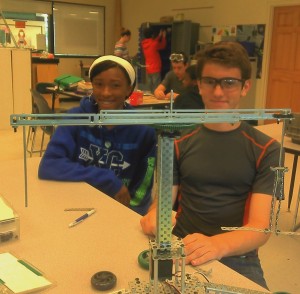
Ethan and Sydni at work
People seemed to be having fun, although at first, they were tentative about putting their cell phones on the rides.
We suggested that students turn their cameras on so the rides could be recorded. We used an accelerometer app to measure the “fun” of the ride–how fast it went, the G forces acting on the phone. The higher the graph read, the more fun the phone had.
Tammy shared the learning goals behind the carnival:
The real goal of the project was to introduce engineering cycle. We used engineering notebooks and engineering drawings. We engaged in reverse engineering–looking at past experiences as well as videos of traditional rides and how they work–while considering the materials we had in the classroom and how to recreate ride experiences with one motor.
The students were motivated to make rides work, to be persistent, and especially to make sure the rides were safe. The fact that they had to test with their own cellphones, enforced the urgency. Nobody tested unless they were confident about “rider security.”
For more information, see Tammy’s website: http://tammypirmann.com/
Here are Ethan’s engineering drawings for the Scrambler and a taste of what the carnival looked like in both planning and presentation stages.
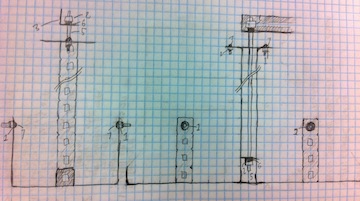
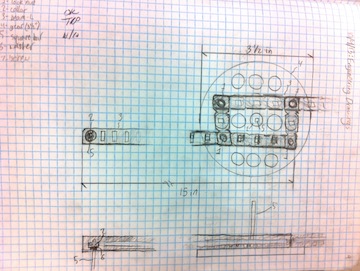
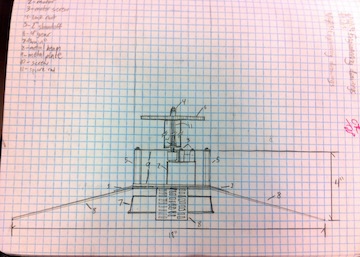
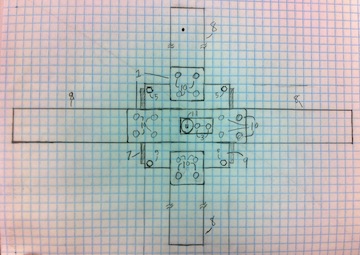
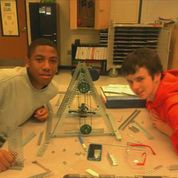
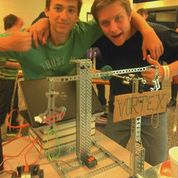
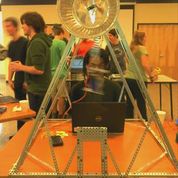
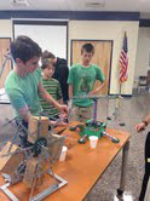
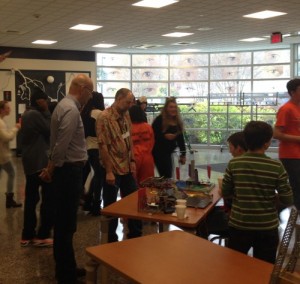
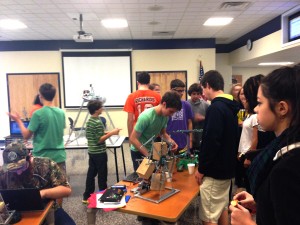
Joyce Valenza is the Teacher-Librarian at Springfield Township High School, author, and technology advocate. Read her SLJ NeverEndingSearch blog here.
